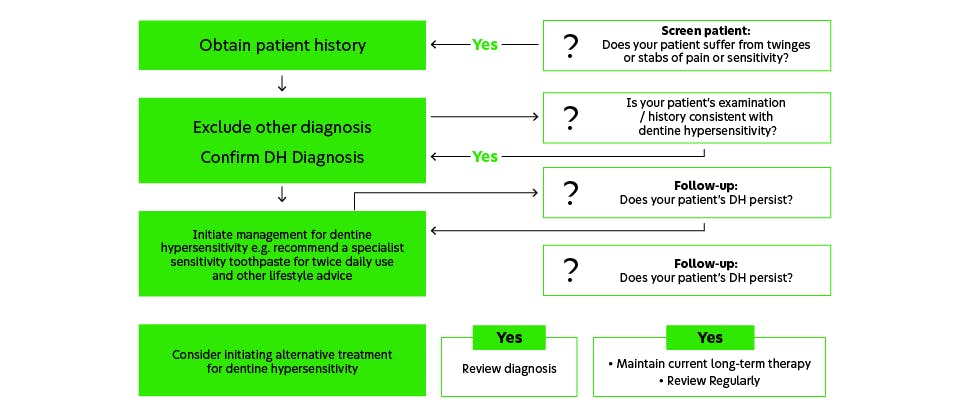Managing Teeth Sensitivity

Managing dentine hypersensitivity
Here we discuss different approaches for managing dentine hypersensitivity, including the consensus recommendations from the Canadian Advisory Board on dentine hypersensitivity, 2003.
Steps for managing dentine hypersensitivity
IDENTIFY
- Screen for dentine hypersensitivity and confirm with a differential diagnosis
EDUCATE
- Increase patient awareness of the causes of dentine hypersensitivity
- Advise on lifestyle changes they can make to successfully manage the condition
RECOMMEND
- Along with appropriate advice, recommend or provide treatments to suit the individual needs of your patient

Educating your patients
Patients should be educated on how to manage their dentine hypersensitivity through changes in lifestyle and daily oral hygiene habits. Recommendations could include:1
- Instructing the patient on how to remove risk factors (e.g. excessive or ineffective toothbrushing)
- Removal of excessive dietary acids
Maintaining good oral hygiene is important for patients with dentine hypersensitivity.
Recommend specialist sensitivity toothpastes

Recurring dentine hypersensitivity and patient follow-up
Canadian Advisory Board guidelines for effective long-term management of dentine hypersensitivity recommend reassessing patients’ experience of pain at subsequent appointments. If they still experience dentine hypersensitivity pain they should be followed up and reviewed.2

Dentine hypersensitivity management: in summary2,3
Flowchart adapted from Canadian Advisory Board on dentine hypersensitivity, 2003.
Help your patients enjoy life without sensitivity
Causes and mechanisms
Find out about the causes and mechanisms behind dentine hypersensitivity.
Impact on patient quality of life
Find out about the impact dentine hypersensitivity has on patients’ daily lives.


